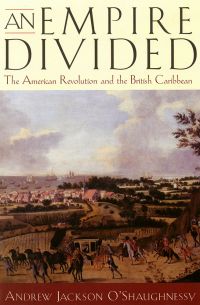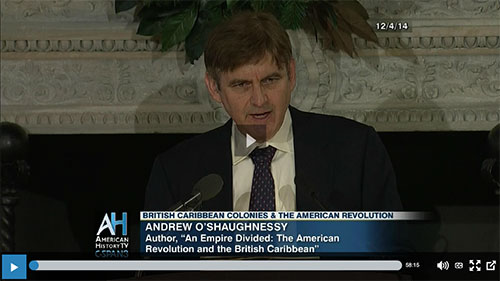Praise for "An Empire Divided"
“Promises to reshape the way Americans think of the Revolution."—Publishers Weekly
"The best word on a subject basic to American and Caribbean history."—Kirkus Reviews
"O'Shaughnessy demonstrates in compelling detail and strong narrative why understanding the West Indies during the American Revolution is important to understanding the Revolution itself."—Edward Countryman, Southern Methodist University
"Immensely significant."—John J. McCusker, Trinity University
"This book will enrich debates not only about white society in the West Indies or about the scope of the American Revolution but also about the nature of the British Atlantic world of the eighteenth century."—Peter J. Marshall, King's College, London
"A well-organized, thought-provoking, masterly narrative history."—Military Review
"Succeeds admirably in restoring the British West Indies to its central place within the war that divided an empire."—Georgia Historical Quarterly
"O'Shaughnessy's fine book is to be recommended to all who are interested in the American Revolution and in the political contours of the British Atlantic empire."—American Studies
"O'Shaughnessy's excellent, clearly written book is an important contribution to Caribbean and U.S. history. He successfully explains why the Caribbean colonists, far from supporting the American Revolution, preferred to keep the British empire intact. . . . Highly recommended."—Choice

 There were 26—not 13—British colonies in America in 1776. Of these, the six colonies in the Caribbean—Jamaica, Barbados, the Leeward Islands, Grenada and Tobago, St. Vincent; and Dominica—were among the wealthiest. These island colonies were closely related to the mainland by social ties and tightly connected by trade. In a period when most British colonists in North America lived less than 200 miles inland and the major cities were all situated along the coast, the ocean often acted as a highway between islands and mainland rather than a barrier.
There were 26—not 13—British colonies in America in 1776. Of these, the six colonies in the Caribbean—Jamaica, Barbados, the Leeward Islands, Grenada and Tobago, St. Vincent; and Dominica—were among the wealthiest. These island colonies were closely related to the mainland by social ties and tightly connected by trade. In a period when most British colonists in North America lived less than 200 miles inland and the major cities were all situated along the coast, the ocean often acted as a highway between islands and mainland rather than a barrier.


